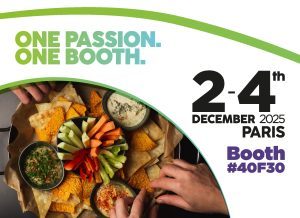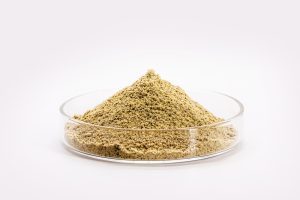Do you usually read the labels of the products you buy? The information on labels can often seem complex, making it difficult for people to understand what they are effectively consuming. However, this information is essential to help consumers understand products and make better-informed decisions when shopping.
On the other hand, there is growing concern among people about the food they consume. Consumers seek food products free from artificial ingredients, with low sodium, sugar, and fat contents, fewer preservatives, and other additives, and prefer ingredients of natural origin that are easy to understand.
According to a Mintel survey¹, 34% of US adults consider the amount of processing a critical factor when purchasing food or drinks, as well as price and flavor.
In Latin America, specifically in Argentina, parents with children under 18 are more likely to purchase products with low sugar (31%) and low salt (26%) claims compared to those with no children (25 % and 21%, respectively), as shown in the Mintel² survey.
Moreover, high-sodium warning labels would help the nearly 20% of consumers in Latin America who consider low salt an essential factor in food purchase².
The front-of-pack labeling solution benefits the general public by allowing a better understanding of the food product labels. That solution presents the information in a simple, illustrative, and transparent manner, helping consumers to choose more suitable products for a healthy diet.
THE IMPORTANCE OF FRONT-OF-PACK LABELS
Labels detail specific information, helping consumers make food choices that match their individual needs. For instance, individuals with dietary restrictions, such as gluten, lactose, sugar intolerance, or food allergies, can obtain essential information directly on the front of the package.
Readability is essential, as label information allows consumers to make better eating decisions, contributing to a more balanced and healthier diet.
In addition, front-of-pack labels make it easier to compare similar products, allowing consumers to choose those that best meet their needs and preferences.
Front-of-pack labels are equally essential to the food industry, as they demonstrate transparency, helping to establish consumer trust. In many countries, front-of-pack labeling is a legal requirement, ensuring food products comply with regulations established to protect public health and binding food manufacturers to provide accurate and complete information about their products.
Parte superior do formulário
MAIN EXAMPLES OF FRONT-OF-PACK LABELS
Front-of-Pack Nutritional Labeling (FOP) systems are applied worldwide to help consumers make better-informed purchase decisions and easily identify healthier products.
Those systems have encouraged food companies to reformulate their products, making their compositions healthier and in line with market expectations.
To help unravel the front-of-pack labels and better understand the information they provide, we highlight some FOP examples:
• Endorsement systems: applying logos and seals from a positive perspective to encourage the purchase of endorsed products, such as the lock logo in Sweden.

• Single indicator systems provide an overall score or rating, such as the Health Star Rating in Australia and New Zealand and the NutriScore in the European Union.

Australia

New Zealand
• Monochromatic guidance for Guideline Daily Allowance (GDA) systems is voluntarily used by the food industry around the world, particularly in the US.

• Color-coded GDA or FOPNL reference value systems, such as that used voluntarily in the UK.

• Text-based, color-coded systems for specific nutrients, such as that approved in Ecuador.

• Warnings for specific nutrients (“high/excess”) are widely used in several countries in Latin America and Canada.

Brazil

Latin America

Canada
The front-of-pack labels allow you to choose foods that match your health and wellness goals confidently.
HOW DO YEAST EXTRACTS CHANGE FRONT-OF-PACK LABELS
Food companies are following food trends, such as the clean-label trend, and are reformulating their products to reduce or eliminate artificial ingredients and preservatives. They increasingly use natural ingredients and processing methods to create cleaner, more transparent food products.
Sodium reduction is included in almost all labeling schemes, driving product differentiation. However, that is easier said than done, as salt is one of the most functional natural ingredients. It enhances food products’ flavor, texture, shelf life, and safety.
In terms of flavor, the salt tolerable limit varies according to the eating habits in each region, which is a challenge for the food industry.
As for sugar reduction, the food industry is resorting to alternative sweeteners to enhance food flavor or using other ingredients to compensate for the absence of sugar.
Food companies are also investing in developing novel low-fat products or reformulating the existing products to reduce fat content, replacing high-fat ingredients with alternatives, and offering smaller, more controlled portions. That not only helps in reducing fat intake but also promotes healthier eating habits.
Therefore, umami-rich compounds, such as yeast extracts, are one of the best options for enhancing the flavor profile in healthier food formulations. Biorigin, committed to promoting health and well-being, has developed a wide range of natural ingredients to compensate for the lack of flavor in food formulations with reduced salt, sugar, or fat.
DISCOVER BIORIGIN’S BIONIS LINE
The BIONIS line includes a comprehensive and versatile range of yeast extracts that offer several benefits to your products. It promotes healthiness, builds flavor, and masks off-flavor notes in reduced salt and sugar recipes. The BIONIS line provides many possibilities to offer clean, safe, and sustainable food products.
References:
¹ 2024 Food & Drink Trends: North America webinar – Mintel
² What do LATAM consumers want to see on food labels? – Mintel









